
Photographer W. Eugene Smith's picture of a Marine drinking from his canteen during 1944's Battle of Saipan is as iconic a war picture as any ever made. In fact, when the U.S. Postal Service released a “Masters of American Photography” series of commemorative stamps in 2002, Smith was included – and this image was chosen as representative of his body of work. (Photo by W. Eugene Smith/Time & Life Pictures)
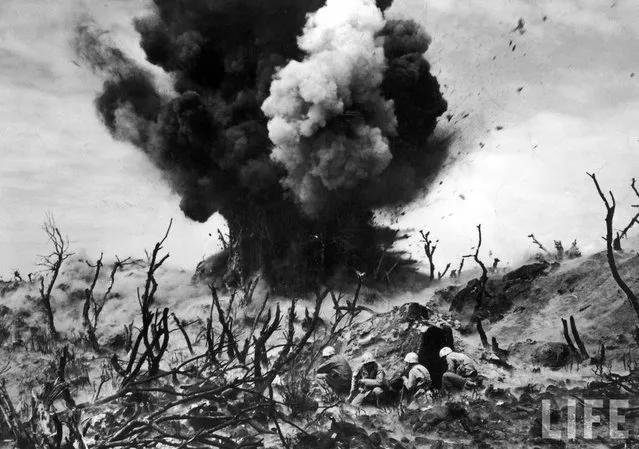
In a picture that captures the violence and sheer destruction inherent in war perhaps more graphically than any other ever published in LIFE, Marines take cover on an Iwo Jima hillside amid the burned-out remains of banyan jungle, as a Japanese bunker is obliterated in March 1945. (Photo by W. Eugene Smith/Time & Life Pictures)
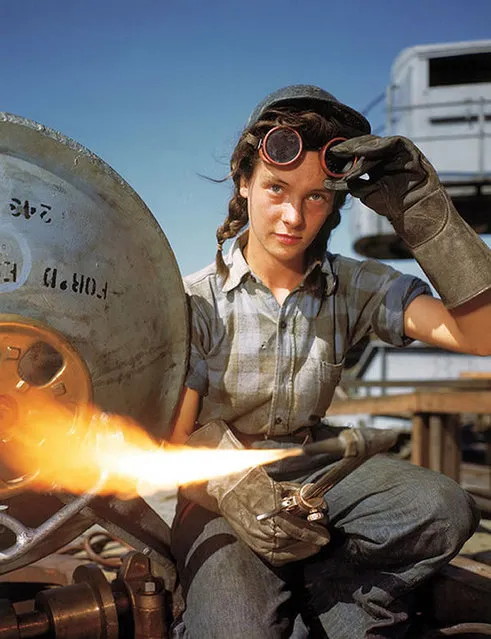
A welder at a boat-and-sub-building yard adjusts her goggles before resuming work, October, 1943. By 1945, women comprised well over a third of the civilian labor force (in 1940, it was closer to a quarter) and millions of those jobs were filled in factories: building bombers, manufacturing munitions, welding, drilling and riveting for the war effort. (Photo by Bernard Hoffma/Time & Life Pictures)
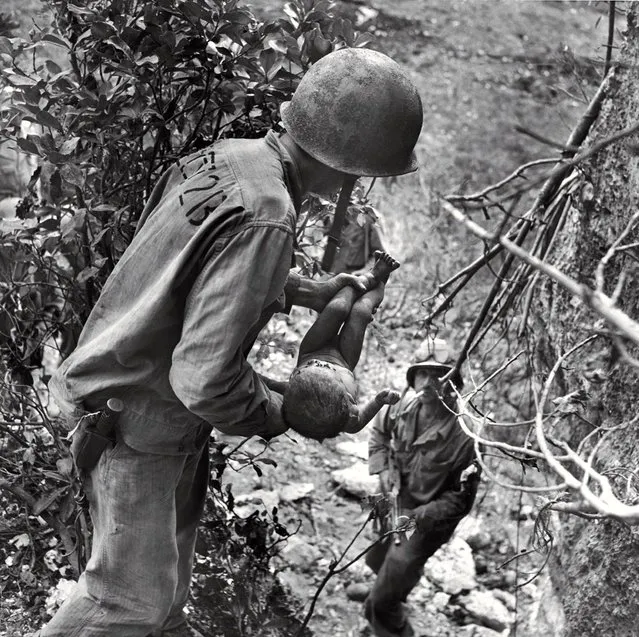
In a photo that somehow comprises both tenderness and horror, an American Marine cradles a near-dead infant pulled from under a rock while troops cleared Japanese fighters and civilians from caves on Saipan in the summer of 1944. The child was the only person found alive among hundreds of corpses in one cave. (Photo by W. Eugene Smith/Time & Life Pictures)
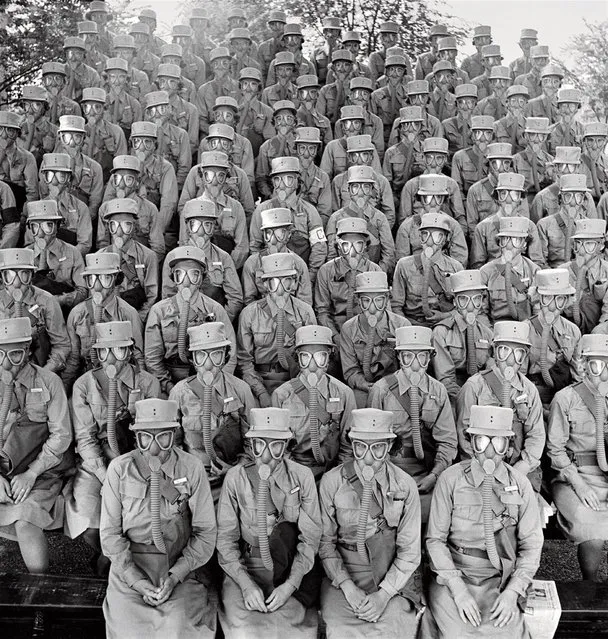
Members of the Women's Auxiliary Army Corps, commonly known as WAACs, don their first gas masks at Fort Des Moines, Iowa, in June 1942. The female troops were famously praised by General Douglas MacArthur, who called them “my best soldiers”. (Photo by Marie Hansen/Time & Life Pictures)
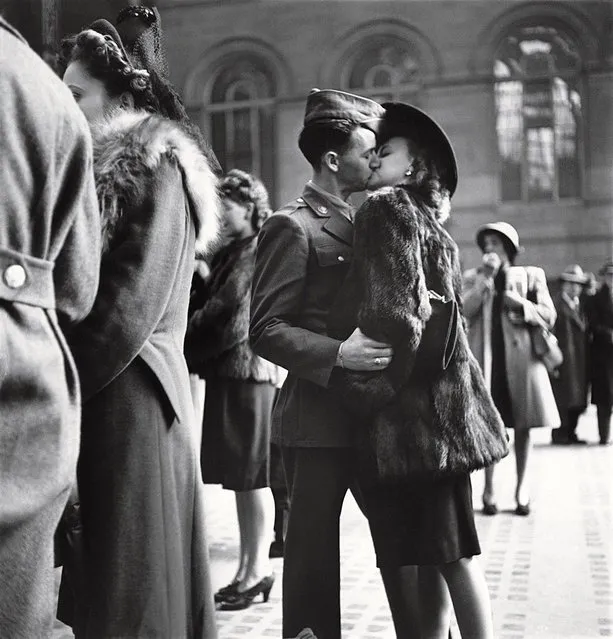
Couple in Penn Station sharing farewell kiss before he ships off to war during WWII. (Photo by Alfred Eisenstaedt/Time & Life Pictures)

Bodies of 3 dead American soldiers lying in the sand on shoreline nr. half-sunken landing craft on Buna Beach after a Japanese ambush attack. This photo was taken in February 1943. (Photo by George Strock/Time Life Pictures)
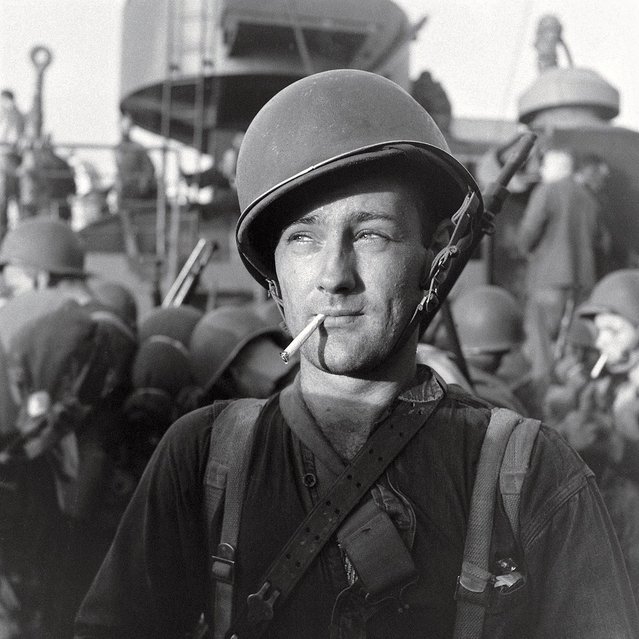
An American Marine readies to land on Guadalcanal during the five-month struggle for the island between late 1942 and early 1943. Three thousand miles south of Tokyo, Guadalcanal was a major shipping point for military supplies. The Allied victory there in February, 1943, marked a major turning point in the war after a string of Japanese victories in the Pacific. (Photo by Joe Scherschel/Time & Life Pictures)
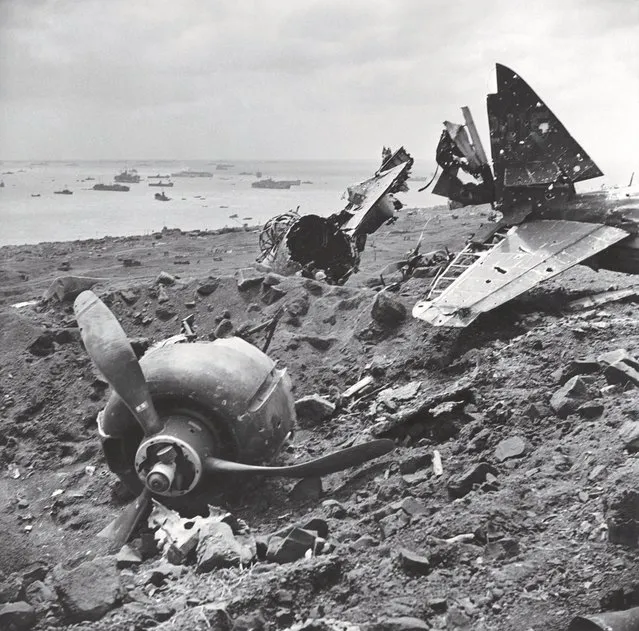
An exemplar of a bitter, grueling land battle, Iwo Jima also saw prodigious air and sea power brought to bear as American and Japanese troops clashed over control of the tiny Pacific island. American forces finally captured Iwo Jima – and its two strategic airfields – in late March, 1945. (Photo by W. Eugene Smith/Time & Life Pictures)
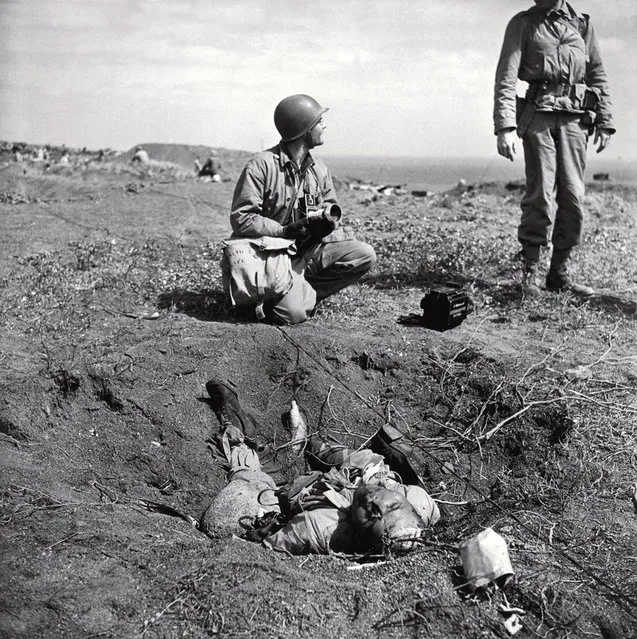
American troops chat near a dead Japanese soldier on Iwo Jima. The degree to which the Japanese were willing to fight to the death, rather than surrender, is summed up in one remarkable statistic: Close to 20,000 Japanese soldiers were killed during the battle; only around 200 were captured. (Photo by W. Eugene Smith/Time & Life Pictures)
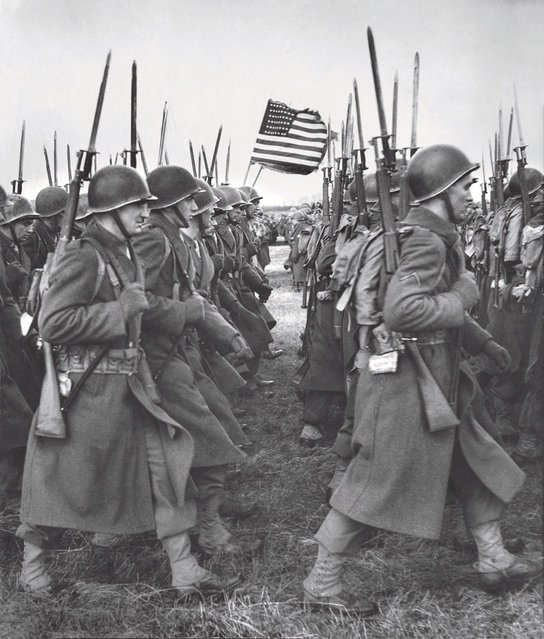
GIs tramp in review across an English field, 1944, as the long-planned Operation Overlord – the D-Day invasion of France – draws near. With 160,000 Allied troops taking part, the cross-Channel attack was the single greatest air-land-and-sea invasion in military history. (Photo by Frank Scherschel/Time & Life Pictures)
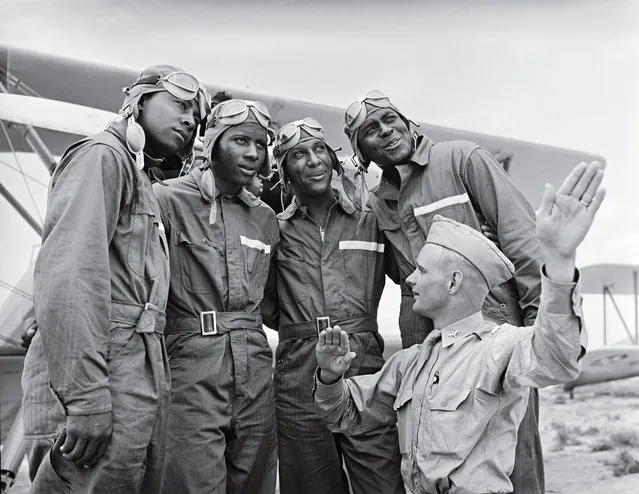
Lt. McCune instructing cadets in training for US Army Air Corps 99th Pursuit Squadron, 1st all-black combat pilot unit (African-Amer. fliers of WWII Tuskegee airmen fame), about air currents at flight school, 1942. (Photo by Gabriel Benzur/Time & Life Pictures)
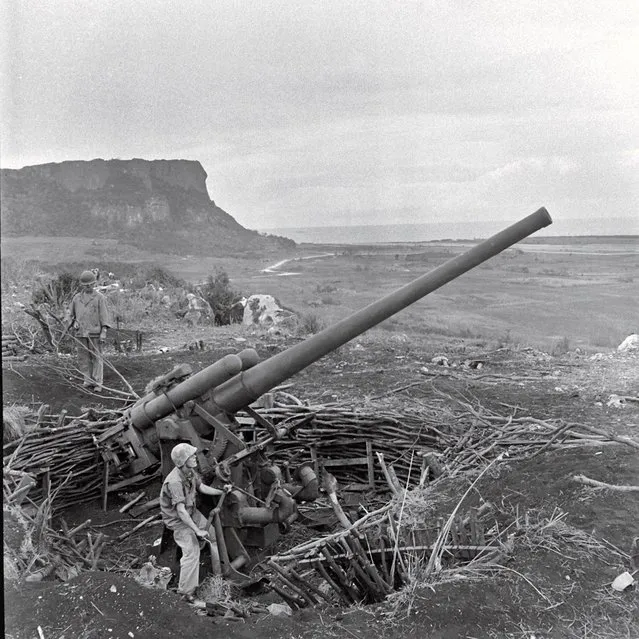
A crew maneuvers an enormous piece of artillery during the Battle of Saipan, 1944. In the waning days of the struggle for the island, thousands of Japanese civilians and troops committed suicide, rather than surrender to American troops. Many leapt to their death from the top of sheer cliffs that fall 200 feet to rocks and surf below. (Photo by Peter Stackpole/Time & Life Pictures)
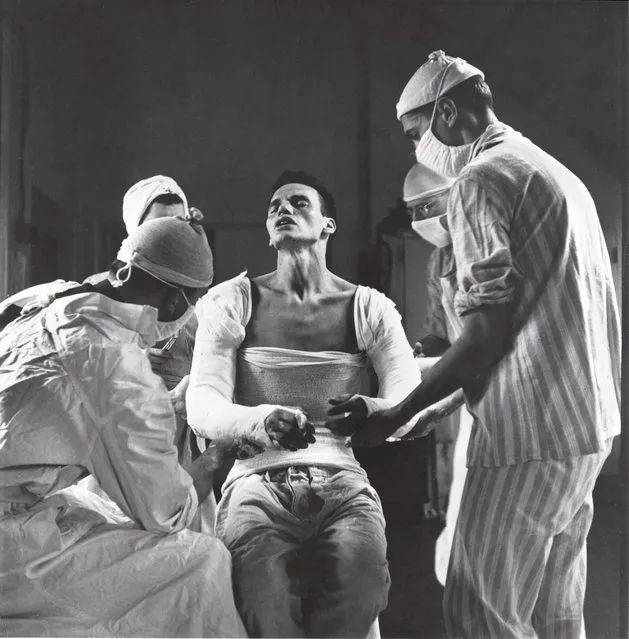
Army medic George Lott, wounded in both arms in November, 1944, grimaces as doctors mold a cast to his body. When Lott embarked on a 4,500-mile, seven-hospital journey of recovery, photographer Ralph Morse – astonished by the high level of medical care wounded troops received both at the front and behind the lines – traveled with him, and chronicled Lott's odyssey in a revelatory cover story for LIFE. (Photo by Ralph Morse/Time & Life Pictures)
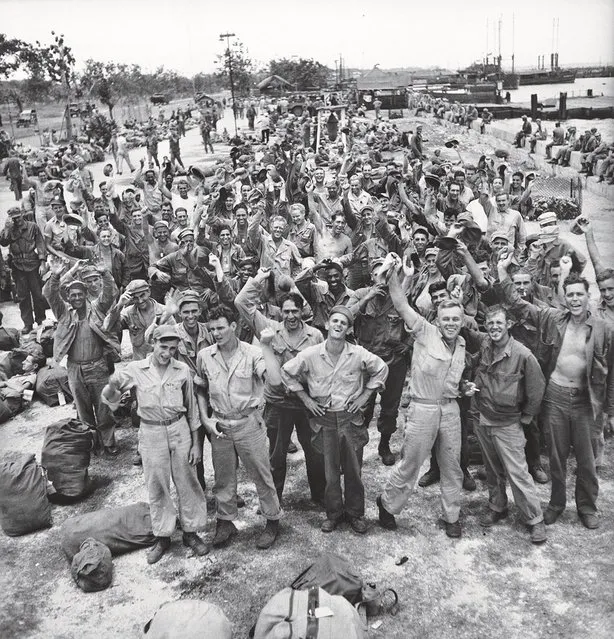
American troops in the Philippines celebrate the long-awaited news that Japan has, finally, unconditionally, surrendered in August 1945. (Photo by Carl Mydans/Time & Life Pictures)
10 Mar 2013 12:50:00,
post received
0 comments
